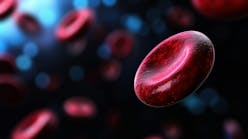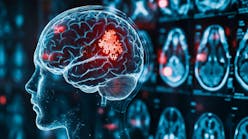Identification and classification of cancerous cells is a multi-stage process for clinical laboratory scientists. This process includes initial laboratory testing and typically is continued by the pathologist and his or her staff. The use of advanced molecular and chemical testing by clinical staff has become integral to the classification of cancer diagnostic workups by the pathology professionals. The methods involved include clinical chemistry, hematology, and immunology, and these are done even before the patient undergoes additional workups requested by the treating physician. The contributions of clinical and pathological specialists are critical to patient diagnosis and treatment decisions.
The disease management of cancer patients has become increasingly specialized, primarily because of what Cree et al call “special features of the tumor, often due to special genetic alterations.”1 Knowledge of these features has led to an increase in the personalized medicine approach, an aspect of care that substantially involves the work of the clinical laboratory and other ancillary services. This care is based primarily on patient symptoms but may also be discovered during routine screening tests. For example, the most typical presenting symptom in patients later diagnosed with lung cancer is the common cough.2 However, in a 678-patient study, only 27% of those patients presented symptoms related to their primary cancer.2 This demonstrates why we as clinical laboratory scientists play a vital role in multipronged disease discovery of early-stage malignancies.
Clinical hematology and immunology
Routine screening tests such as the complete blood count (CBC), general chemistry testing, and others sometimes produce abnormal or suspicious results that can help lead the physician to follow-up testing identifying tumor growth. Some abnormalities seen include out-of-range CBC counts, increased lymph cells, increased immature granulocytes in the case of lymphoma or cancers of the bone marrow, or possibly increased lactate dehydrogenase (LDH) in some cases. More recently, some specific biomarkers have been developed for the immunological lab staff. These tests include, for example, Prostarix, a metabolic test identifying changes in PSA levels, and ProMark, a multiple protein biomarker platform.3 In some cases, these lab tests produce an identifiable cancer, but in many cases the physician must incorporate tissue and cell samples. Many medical professionals believe, as Zhang et al stated, that “even if a biomarker with very high sensitivity and specificity is identified, screening the general population for…cancer is unlikely to be cost-effective or practical.”4
Diagnostic imaging
Frequently, the initial work-ups result in the need for diagnostic imaging scans. Imaging can often suggest whether a tumor is benign or malignant based on a pattern of growth. This pattern includes increased risk of metastasis, infiltration, or displacement of healthy cells. More frequently, the scans are used in the diagnosis and then following patient treatment, without needing tissue sample collections. However, pathological evaluation sometimes remains the best route for the most conclusive diagnosis of tumor burden.
Pathologic evaluation
Pathology's involvement often begins with an additional review of hematological blood smears. These smears may be a first “tissue” sample that represents the tumor cells. Most likely, the positive slides will be followed up with referral testing such as flow cytometry in order to clarify cancers or identify abnormal cell lines. More commonly the treating physician will collect patient tissue samples as a biopsy and send them to pathology for evaluation of possible tumors.
Tissue biopsies are collected by the treating physician or in some cases the pathologist. Such biopsies include, for example, a bone marrow sample collected from the iliac crest. Alternately, collection can be done from a tissue or organ site if possible indications of skin cancer in skin or other organs are present. The tissue biopsy is critical to help the physician determine the best therapeutic modality.
The tissue biopsy is sent to the histotechnician and histologist for preparation prior to study by the pathologist. The biopsy sample is typically processed by soaking in formalin in order to fix and dehydrate it, and this is followed by soaking in high-percentage alcohol in order to remove all water from the sample. This processing has the effect of removing hydrophobic materials that impact later contrast dye processing. Once the sample is dehydrated, it is embedded in paraffin and prepared, typically using a microtome and tissue staining. Staining done in histopathology is usually different than that needed for hematology purposes.
Histological examination
The slide preparation typically first utilizes common contrast visualization dyes, hematoxylin and eosin (H&E) staining, in order to identify pathologic or histo-morphologic features of the cells. The tissue slices are extremely thin, typically about 5mm thick, in order to be flattened onto the slide and transmit light under microscopic review. Tumor cells will appear different in their cytology or are arranged in a different formation caused by abnormal growth patterns. Some of these tumors will push against other tissues and cause cellular inflammation. (Figure 1 contrasts normal colon cells and tumor cells indicative of adenocarcinoma.) This has a tendency to impact the appearance under the microscope, so additional testing is necessary. The ancillary testing has increasingly enabled the pathologist to personalize the medical review.
Ancillary testing includes histochemistry (special stains), immunohistochemistry (IHC), or molecular techniques. Histochemistry staining is typically based on reagent reactions to substances within the cells. Histochemical stains are usually not used in a cancer work-up because they have been largely replaced by IHC. The IHC processing has the benefit of increased diagnostic specificity. For example, the Periodic-Acid Schiff (PAS) stain functions well in identification of fungal elements by staining the fungi pink. This functions for both dead and living fungal elements.
IHC utilizes antibodies against a specific protein antigen that can be expressed within the cell's membrane, cytoplasm, or nucleus. One way to utilize IHC is to expose the patient tissue sample to a primary antibody against the target antigen and then a secondary antibody polymer used to conjugate both secondary antibodies and enzyme molecules. This staining process correlates to the expression of a known protein associated with the cancer or the probing of the original tissue with a cellular differentiation marker. The differentiation marker is usually associated with the tissue origin of the target tumor, aiding in diagnosis of tumor metastasis. There are several variations of these IHC reagents utilized for different tumors.
The immunohistochemical stain typically utilized for identification of tumors in liver, brain, and heart cells is hep par 1. This staining compound is a well characterized marker for hepatocellular carcinoma.5 Thyroid transcription factor 1 (TTF1) is found not only in the thyroid but in lung tissues as well. Human epididymis protein 4 (HE4) is another specified stain used in the identification of pancreatic adenocarcimona. These markers are just a short list of IHC stains currently utilized.
Another example: melanoma tumors are imaged by staining for BRAF mutations. If breast cancer is suspected, the physician may look not only for tumor cells but for an abnormal immunology profile in estrogen, progesterone, and HRT-2 biomarkers. As personalized medicine has grown, the number of IHC stains utilized in the pathologic arena has also increased.
Molecular and ancillary evaluation
Molecular techniques are also commonly implemented by the histopathology lab staff. These have increased the ability of the laboratory to identify genetic mutations associated with specific malignancies. A molecular technique for identifying Lynch Syndrome, a type of colon cancer, is important due to the possibility of nuclear microsatellite instability associated with an increased chance of other carcinomas. However, apart from soft tissue and hematologic malignancies, molecular techniques are less commonly used. They play a larger role for the physicians in determining how treatment is progressing.
Ancillary testing is employed frequently after the diagnosis has been made in order to determine how the tumor is responding to treatment, whether chemotherapeutic agents or radiation treatments for the cancer patient are employed. Examples include ER/PR/HER2 for breast cancer, BRAF for melanoma, CKIT for gastrointestinal tumor, EGFR/ALK for lung adenocarcinoma, and KRAS/PIK3CA/BRAF/NRAS for colorectal adenocarcinoma, among others.
In cancer cases, the clinical laboratory and the pathologist have critical roles both in identifying abnormalities in the patient's review testing and assisting the physician to determine the optimal therapy for the patient. The clinical laboratory possesses an array of specialized molecular and pathology imaging tools, each providing a critical piece of the puzzle. These tools support the diagnosis and response to the patient's treatment. The goal, now more attainable than ever, is to achieve early and accurate diagnosis and to provide treatment that will enable the best possible outcomes.
References
- Cree, I, Deans Z, Ligtenberg MJ, et al., Guidance for laboratories performing molecular pathology for cancer patients. J Clin Path. 2014;67:923-931.
- Beckles MA, Spiro SG, Colice GL, Rudd RM. Initial evaluation of the patient with lung cancer: symptoms, signs, laboratory tests, and paraneoplastic syndromes. Chest. 2007;132:149S-160S.
- Sartori DA, Chan DW. Biomarkers in prostate cancer: what's new? Curr Opin Oncol. 2014; 26(5):259-264.
- Zhang C, Yang G, Ling Y, Chen G, Zhou T. The early diagnosis of pancreatic cancer and diabetes: what's the relationship? J Gastro Oncol. 2014;5(6):481-488.
- Fan Z, van de Rijn M, Montgomery K, Rouse RV. Hep par 1 antibody stain for the differential diagnosis of hepatocellular carcinoma: 676 tumors tested using tissue microarrays and conventional tissue sections. Mod Path. 2003;16(2):137-144.






